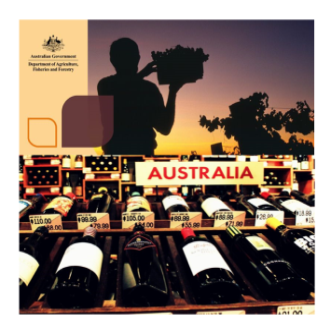For the benefit of those who missed the release by Department of Agriculture Fisheries and Forestry (DAFF) over the Christmas break, they have posted on LinkedIn today about exports to Thailand – and wine in particular. The post advises: “Did you know that over the past three years, the value of Australia’s wine exports to Thailand grew by 118%? Thailand’s growing middle class is consuming more premium agricultural products like Australian wine.”
Naturally there is scope for a great number of Australian products to be exported to Thailand. The Thailand-Australia Free Trade Agreement (TAFTA) came into effect on 01 January 2005 and continues to ensure our access to the Thai market. TAFTA has eliminated the majority of Thai tariffs on goods imported from Australia.
TAFTA is just one of three FTAs that Australian businesses can use to trade with Thailand. As a member of ASEAN, Thailand is also part of the ASEAN-Australia-New Zealand Free Trade Agreement (AANZFTA) and the Regional Comprehensive Economic Partnership Agreement (RCEP).
Australian wine exporters can now use the Asia-Pacific Economic Cooperation (APEC) Model Wine Certificate to certify their exports into Thailand. This simplified certification process reduces cost and administrative burden for exporters.
The Thai economy is the second largest in the ASEAN and one of its fastest growing. In 2022–23, Thailand was Australia’s 7th most valuable export market for wine (or 8th largest, if the EU is counted as one), and 9th largest for AFF products overall.
Implications for Australian agriculture exporters
According to the DAFF release in late December, Australian exporters can now export wine to Thailand with streamlined testing and analysis requirements, opening up opportunities with this growing market. Expansion and diversification of international exports is important to offset a greater supply of domestic wine. International trade has become increasingly important for both the Australian and global wine industries. In 2022, 42% of global wine production was traded internationally compared to 22% in 2000.
Australia exported a record value of A$61 million of wine to Thailand in 2022–23. This was a 31% increase in value compared to 2021–22, in real terms. Over the past decade, red table wine has consistently been the main wine variety exported to Thailand. Its share of the trade value increased from 71% in 2012–13 to 82% in 2022–23.
TAFTA has given Australia a trade advantage over key competitor suppliers such as the EU and the US. The EU and the US do not have FTA’s with Thailand, although the EU’s trade talks with Thailand were relaunched in March this year. Chile is another competitor in the Thai market and benefits from preferential tariff treatment under the Thailand-Chile FTA.
Over the past three years, Australia’s wine exports have declined. In addition to import duties placed on wine to China, COVID-19 had an impact on the hospitality sector in most markets, challenging global demand for wine particularly for wine sold in restaurants.
Exports to Thailand, however, grew over this period. The value of exports to Thailand increased by 245% in real terms over the past decade, going from A$18 million in 2012–13 to A$61 million in 2022–23. Over the past 3 years, there was particularly strong growth with a 118% increase in the value of wine exports to Thailand.
Read our related articles from last year: Boosters for Aussie Exporters and Deepening Our Trade Ties at ASEAN.
For more information about international trade, whether with Thailand or elsewhere, contact us here at Colless Young. As licensed Customs Brokers and Freight Forwarders we offer correct, professional advice on all your global transportation requirements. We are based in Brisbane and provide a complete range of logistics services, both airfreight and sea cargo, through all Australian ports and airports.

